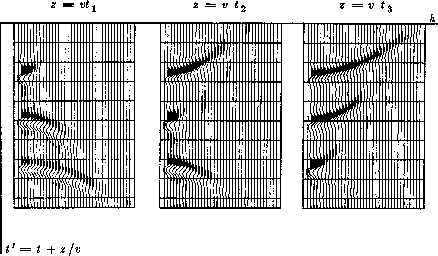
When dealing with the offset h it is common to assume that the earth is horizontally layered so that experimental results will be independent of the midpoint y. With such an earth the Fourier transform of all data over y will vanish except for ky = 0, or, in other words, for Y = 0. The two square roots in (14) again become identical, and the resulting equation is once more the paraxial equation:
 |
(33) |
 |
The waves focus best at zero offset. The focus represents a downward-continued experiment, in which the downward continuation has gone just to a reflector. The reflection is strongest at zero travel time for a coincident source-receiver pair just above the reflector. Extracting the zero-offset value at t = 0 and abandoning the other offsets is a way of eliminating noise. (Actually it is a way of defining noise). Roughly it amounts to the same thing as the conventional procedure of summation along a hyperbolic trajectory on the original data. Naturally the summation can be expected to be best when the velocity used for downward continuation comes closest to the velocity of the earth. Later, offset space will be used to determine velocity.